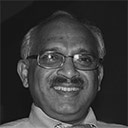I have been a member of IEEE since 1984, when I started as a graduate student pursuing my doctorate at the University of Connecticut (UCONN) in Storrs. Prior to coming to graduate studies in controls and systems engineering, I had considerable experience in the industry, having worked for Tata Motors and Crompton Greaves Limited in India. These two stints lasted for eight years starting from 1975 after I graduated with a B.Tech (Honors) with distinction from the Indian Institute of Technology in Kharagpur, India. Tata Motors (erstwhile TELCO) had collaborated with Daimler-Benz in Germany, and Crompton Greaves Limited with Westinghouse in the United States/Canada. I was very proficiently trained in the best design and manufacturing practices at both locations.
In 1984, my introduction to graduate work was mostly theoretical. I still remember the words of my first academic adviser at UCONN, who said to me, “Welcome to high tech from a low-tech industry.” These words still ring in my years today. Little did my first adviser know how high tech the industry was in relation to automobiles and transformers. I decided then that for anyone to be a successful engineer, one has to be conversant with standards, which govern the best practices of design, manufacturing, and use of a device in a particular application. I learned through several technical committees attached to the IEEE-Standards Association that IEEE was a great source for standards work. Fortunately, in 1996, I found one suitable for my research and teaching in the area of transformer design, manufacturing, and usage in the form of the IEEE Transformer Committee as a part of IEEE-PES.
I had a great opportunity to fulfill my dream of teaching students several applications and also instilling in them the concept of inculcating best practices with guidance from suitable standards. I have taught most of the courses in electrical power engineering and controls since I started my academic career at UHART in 1988 and during the five years prior to this at UCONN. I encouraged my students to become IEEE student members in return for 10% points towards their final grade and pursuit of a tangible project. Students in my courses could not avoid this bait, but the net result was an increased interest in the course material as well as the related additional information they obtained from IEEE Spectrum Magazine.
So far, I have had a hand in graduating close to 5,000 students over the last 30 years. I hope this small step in helping students become interested in standards goes a long way in producing successful electrical engineers for posterity’s sake so that “the light remains on” forever!
 Hemchandra M. Shertukde, Ph.D. P.E.
Hemchandra M. Shertukde, Ph.D. P.E. 